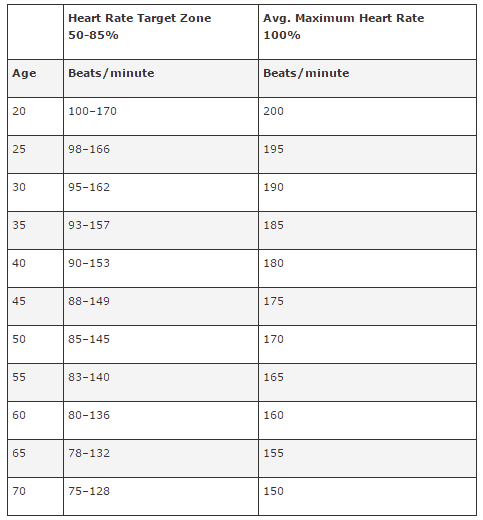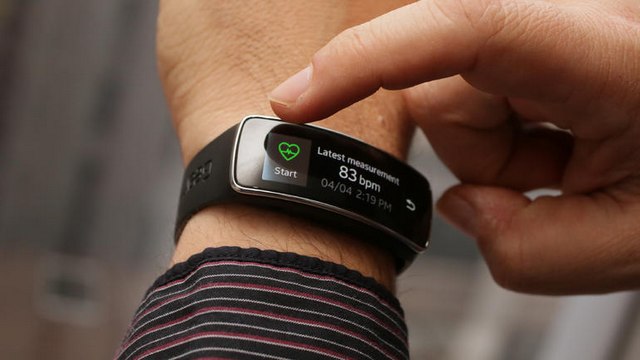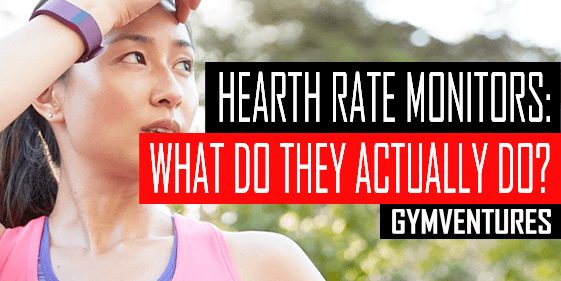There is no better indicator of how your workout is going than your heart. Heart rate monitors are the link between inner happenings/beating of your heart and your visuals on the outside.
It is this great benefit that comes with these devices that allows us to measure the level of intensity with which we are exercising and shift gears or adjust course as necessary. Allowing us to derive the absolute maximum results from our workouts.
Related: How Many Days a Week Should You Do HIIT?
What Does a Heart Rate Monitor Measure?
As the name implies, it measure the rate at which our heart is beating; but why is this so important?
The reason we need to know at what rate our heart is pumping is because there are ideal heart rate zones we are trying to shape-shift our exercise towards in order to derive the most out of the workout.
Related: 6 Tips to Help Manage Weight During Quarantine
What Is My Target Heart Rate?
The Center for Disease Control and Preventions, a federal authority on public health in the United States, has put together an awesome explanation on a person’s target heart rate.
The CDC states that the average person’s rate should be 50-70% of their max heart rate for moderate exercises and 70-85% for more vigorous ones; which are determined by ones age.
The chart provided is a general guideline:

How Do I Calculate It?
There is always a margin of error in all calculations, even the most scientific ones are smart enough to leave room for deviation, no matter how small. That being said, a solid estimate of a person’s max heart rate can be calculated by subtracting your age from 220.
So let’s say a person is 60 years of age, the estimated max heart rate related to age is calculated as such:
220 – 60 = 160 beats per minute (or bpm).
Thus, going back to the target heart rate, the 50, 70, and 85 percent marks are as follows:
- 50 percent level: .50 multiplied by 160 = 80 bpm
- 70 percent level: .70 multiplied by 160 = 112 bpm
- 85 percent level: .85 multiplied by 160 = 130 bpm
Related: 10 Tips for Cardiovascular Support for Athletes
How Do I Make Sense of It?
The way to look at it is, once you’ve calculated your maximum heart rate by subtracting your age from 220, you have found out how fast your heart can beat going all out; obviously you want to take good care of your heart and should not push it to its maximum if you are significantly out of shape. One should work their way up. After all, we only have one heart.
Therefore, once you have your maximum, using the calculation of the 60-year old person in the example above:
- For moderate-intensity workouts: the 60 year old requires the heart rate to be inside the 80 and 112 beats per minute (bpm) interval during exercising.
- For vigorous-intensity workouts: the 60 year old requires that the heart rate remain inside the 112 and 130 beats per minute (bpm) interval during physical activity.
Monitoring the intensity of your exercise along these metrics is a great way of incorporating this knowledge into your routine; best way to do it is via a heart rate monitor.
Measuring Your Heart Rate Without a Heart Rate Tracker
The old school way of taking ones heart rate measurement is prevalent and effective to this day. It works exactly as we are taught in school during Physical Education lectures.
To figure out the heart rate zone you are in during your exercise requires you to stop and physically measure you pulse. To measure ones pulse, there are three available to check: the wrist, the neck, and the chest.
The wrist is the most commonly used and recommended. To feel the pulse via your wrist, locate the artery in line with your thumb towards the edge of the wrist. By placing the tip of your middle and index fingers gently over the artery and pressing down, you are able to feel the blood pumping.
To properly measure it, hold the two fingers there for either 60 seconds total and count the beats, or for 30 seconds and times it by 2 if you are in a hurry for whatever reason. Avoid the use of your thumb.
All About Heart Rate Monitors

As you can imagine, heart rate monitors do all of the above and much, much more. By allowing one to collect data and later analyze it and tailor workouts to meet the set goals, it is truly an invaluable piece of technology with tremendous personal well-being benefits.
Types
- Wireless Chest Strap: Sends the data to a wearable device typically on the wrist. Contains a wireless sensor which streams the pulse and ships the info/data to the wearable device on the wrist, typically in the shape of a watch; displaying ones heart rate. Loads of available data is provided, including the low, average, and high heart rates during ones workout. Can also be combined with say a fitbit type of device to include distance and speed in the analytics. Can also be used to develop a course, as the device is capable of saving and finding visiting locations.
- Strapless: Wearable, typically on the wrist that has a sensor built into the device to detect the pulse. At times less effective/accurate than the chest straps, however, much more comfortable. Though most do not pair with distance and speed wearables, they also do not suffer from wireless interference that can at times throw off the chest strap ones.
Who uses them?
Many people have been using and helping to develop the technology along with their lifestyles even further; among some of the many types of people that use them are:
- Walkers
- Joggers
- Rehab Patients
- Bodybuilders
- Crossfitters
- Cyclists
- Hikers
- Skiers
- Runners
- and many more.
Features
The wearable device provides you with real-time metrics on the intensity and effectiveness of your workout. Included in that real-time data are metrics such as your average heart rate; but also your low/ high, and most importantly the target heart rate as well.
- Personalized Zones: Allows one to input personal info into the device, such as height and weight, to uniquely customize ones target zone.
- Duration: Measure the duration of the workout, also most include a stopwatch.
- Calories Burned: Calculates the total amount of calories burned in the process.
- Target Zone Alarm: Sounds an alarm and performs an action such as vibration and showing of an onscreen icon once target heart rate zone is reached during the workout.
- Lap Time: Measures the lap time for cyclists, runner, and anyone else in need of a tracker.
- Distance: Measures total distance traveled; able to account for ascending and descending.
- GPS: Global Positioning System, an invaluable feature for all extreme athletes.
Recording Features
The most revealing aspect of the wearable heart rate monitors is the recording of the data produced by the device during the physical activity.
Most allow for recording of data and viewing at a later time, however the trend has been that training summaries are becoming available after each workout, and in addition to that, allowing one to compare the workout that just happened with one from the past.
A good wearable will have a memory of a decent size to keep all the data, as well as the capability to transfer all the analytics to mobile applications via a wireless network connection. This allows one to upload and swiftly analyze the workouts, share and compare with friends and family, as well as set and beat personal records.
Be sure to verify the compatibility of the wearable watch like heart rate monitor with you smartphone, due to some being specifically compatible only with certain phones and certain apps.
Related: How Fitness Technology Makes Working Out Easier
Design
The contemporary heart rate monitors are designed to perform! Battery lives range anywhere from 5 weeks to 24 months and batteries are replaceable. The face of the watch is normally between .8 and 1.73 inches in height/width.
As with your typical watch, the devices are rather light, with most weighing in at 1-1.5 ounces. One of the best parts of the design are the waterproof nature of most devices, with some enduring up to 100 meters of underwater pressure.
Other aesthetic specs are colors, with some wearable heart rate monitors offering up to 6+ color options. Additionally backlight, time and date, as well as low battery indicators all make these devices well worth the investment.
Wrapping Up
Heart rate monitors come with truly a great number of benefits to one’s personal well-being. They can help you achieve personal goals and beat personal records, interact with family and friends and create friendly competition.
All the while being a great tool for measuring the effectiveness of your workouts and the physical activity being performed.
The best heart rate monitor is the device that will incorporate all of the things mentioned in this article, seamlessly, and you won’t be able to live without it after a short time of using it.
With the knowledge in this article, you are better prepared to take the next step and get one for yourself or loved one.
Keep reading: Using a Foam Roller to Achieve Recovery


